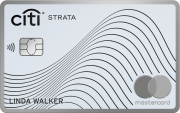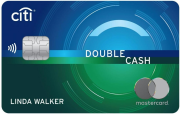The content on this page is accurate as of the posting date; however, some of the offers mentioned may have expired.

As a parade of new mobile phone applications that allow you to pay with your credit card or debit card account with a flick of the wrist or the tap of a screen – you may be wondering if mobile payments are safe and easy for you to use. Smart phone sales have jumped 75% since last year, and according to a 2011 Pew Report, of the 83% of American adults that own a cell phone, only 35% of them own a smart phone. Mobile payments accounted for $3 billion in sales in 2010, according to Forrester Research.
This guide outlines the latest technology and the pros and cons of mobile payment systems.
How it works: Most credit card apps are still just that applications on your phone that you have to open and activate in order to use. Once you have turned on your phone and opened the app you can wirelessly transmit your credit card data to the merchant’s reader. Apple is developing technology it call’s “wave and pay” that would only need to be exposed to a wireless transmitter on your phone. This technology is still be developed and would always still require some kind of confirmation or agreement to pay from the credit card holder.
Businesses in the space
Apple Inc. introduced EasyPay, an app that enables Apple Store customers to buy products with an iPhone by using its camera as a bar code scanner.
LevelUp, a service launched by social media gaming start-up SCVNGR, gives smartphone users individualized Quick Response codes for merchants to scan. LevelUp can be used at more than 180 places in the Boston area.
ROAM Data Inc., a Boston start-up that makes encrypted credit card readers that attach to smartphones or tablets and software, supports mobile commerce.
AisleBuyer also lets customers make in-store purchases with an Android or iPhone while shopping.
Square, a San Francisco company grew its business by giving customers free card readers and charging merchants 2.75 percent per swipe. In some cases this is a much lowere start up cost than installing a traditional credit card machine. Square processes the transaction and deposits the money into the merchant’s bank account.
Pro: So many people carry lots of important data on their smartphones. The ability to pay with a phone would offer one more option for merchants and it would make it fast and easy for people to pay without taking out a wallet and exposing the number on their card to anyone who might be looking to steal the number.
Con: Your data can be retrieved off of a lost cell phone. In order to use a mobile app, you must enter in credit card numbers and security passwords on your phone. Similar to mobile baking, this adat is then saved in the hardware of your phone so each time the app is used the phone can access your private information. A programmer would be able to hack into your phone if it was stolen or lost and retrieve your name, credit card numbers, expiration dates and other valuable information.
But something similar will follow them: the chip-embedded, radio-frequency-secured credit and debit cards that Europeans have used for years.





